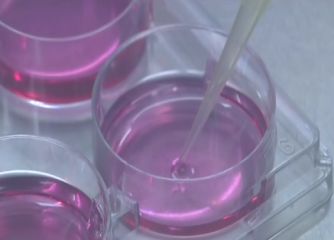Home > Press > Nanoparticle therapeutics might help people suffering from hearing disorders
 |
Abstract:
For millions of people hearing disorders make a negative impact on their lives. Scientists are looking into new ways of treating hearing disorders, by using different sorts of nanoparticles as original inner ear delivery devices. Their hope is that nanoparticles will be able to deliver drugs that can improve or restore hearing.
Nanoparticle therapeutics might help people suffering from hearing disorders
Italy | Posted on June 13th, 2011Due to different anatomic and physiological barriers it is hard to treat hearing disorders by using conventional systemic drug delivery. Therefore scientists are investigating different ways to locally apply drugs using nanoparticles. Researchers at Guangdong Pharmaceutical University in China highlight that several nanoparticles have a combination of properties, such as target specificity, stability in vivo, biocompatibility and capacity to incorporate the encapsulated drugs into the cell, making it possible to use smaller doses and reduce the side effects of therapeutic agents. They anticipate that nanoparticles will play an extremely important role in the development of drug delivery systems, which can find the desired target sites and release the drugs in a controlled way within the cell.
In the European Commission-funded project NANOEAR, scientists from several countries in Europe are studying where different nanoparticles go within the inner ear and if these nanoparticles could be harmful or useful in therapeutics. They are currently testing eight nanoparticle classes, for example, biodegradable liposomes, micelles and lipid-core nanocapsules, regarding their delivery of genes, peptides, corticosteroids, siRNA and shRNA. Since nanoparticles also have properties that separate them, the researchers need to find the best carrier for each drug.
The project‚s researchers are working on nanoparticles targeted towards hair cells, neurons and supporting cells. They have identified fundamental peptides helping the nanoparticles to avoid being trapped and dysfunctionalized by the lysosomal enzymes in the cell‚s endosome system, so the nanoparticles are able to deliver the therapeutic drugs to their targets. Nanoparticles can be modified with coatings to escape immune responses. Three of NANOEAR‚s partners are focusing on safety and they have not observed any adverse reactions.
Within the consortium, researchers at the Medical University of Innsbruck in Austria studied nanoparticles conjugated with a neurotrophin-derived peptide ligand. They found that these nanoparticles selectively targeted the mouse inner ear cells and can potentially be used as inner ear drug delivery devices.
Many research projects are in the early stage development. There will be rigorous controls and take years until patients may be helped by the innovations. However, if the researchers manage to make these nanoparticles do exactly what they are made to do, nanoparticle therapeutics will radically change the way hearing disorders are treated.
####
For more information, please click here
Contacts:
Elisabeth Schmid
Phone: +39 02 70002 572
Fax: +39 02 70002 540
E-mail:
Copyright © youris.com
If you have a comment, please Contact us.Issuers of news releases, not 7th Wave, Inc. or Nanotechnology Now, are solely responsible for the accuracy of the content.
| Related News Press |
News and information
![]() Researchers develop molecular qubits that communicate at telecom frequencies October 3rd, 2025
Researchers develop molecular qubits that communicate at telecom frequencies October 3rd, 2025
![]() Next-generation quantum communication October 3rd, 2025
Next-generation quantum communication October 3rd, 2025
![]() "Nanoreactor" cage uses visible light for catalytic and ultra-selective cross-cycloadditions October 3rd, 2025
"Nanoreactor" cage uses visible light for catalytic and ultra-selective cross-cycloadditions October 3rd, 2025
Nanomedicine
![]() New molecular technology targets tumors and simultaneously silences two ‘undruggable’ cancer genes August 8th, 2025
New molecular technology targets tumors and simultaneously silences two ‘undruggable’ cancer genes August 8th, 2025
![]() New imaging approach transforms study of bacterial biofilms August 8th, 2025
New imaging approach transforms study of bacterial biofilms August 8th, 2025
![]() Cambridge chemists discover simple way to build bigger molecules – one carbon at a time June 6th, 2025
Cambridge chemists discover simple way to build bigger molecules – one carbon at a time June 6th, 2025
![]() Electrifying results shed light on graphene foam as a potential material for lab grown cartilage June 6th, 2025
Electrifying results shed light on graphene foam as a potential material for lab grown cartilage June 6th, 2025
Discoveries
![]() Researchers develop molecular qubits that communicate at telecom frequencies October 3rd, 2025
Researchers develop molecular qubits that communicate at telecom frequencies October 3rd, 2025
![]() Next-generation quantum communication October 3rd, 2025
Next-generation quantum communication October 3rd, 2025
![]() "Nanoreactor" cage uses visible light for catalytic and ultra-selective cross-cycloadditions October 3rd, 2025
"Nanoreactor" cage uses visible light for catalytic and ultra-selective cross-cycloadditions October 3rd, 2025
Announcements
![]() Rice membrane extracts lithium from brines with greater speed, less waste October 3rd, 2025
Rice membrane extracts lithium from brines with greater speed, less waste October 3rd, 2025
![]() Researchers develop molecular qubits that communicate at telecom frequencies October 3rd, 2025
Researchers develop molecular qubits that communicate at telecom frequencies October 3rd, 2025
![]() Next-generation quantum communication October 3rd, 2025
Next-generation quantum communication October 3rd, 2025
![]() "Nanoreactor" cage uses visible light for catalytic and ultra-selective cross-cycloadditions October 3rd, 2025
"Nanoreactor" cage uses visible light for catalytic and ultra-selective cross-cycloadditions October 3rd, 2025
Alliances/Trade associations/Partnerships/Distributorships
![]() Chicago Quantum Exchange welcomes six new partners highlighting quantum technology solutions, from Chicago and beyond September 23rd, 2022
Chicago Quantum Exchange welcomes six new partners highlighting quantum technology solutions, from Chicago and beyond September 23rd, 2022
![]() University of Illinois Chicago joins Brookhaven Lab's Quantum Center June 10th, 2022
University of Illinois Chicago joins Brookhaven Lab's Quantum Center June 10th, 2022
|
|
||
|
|
||
| The latest news from around the world, FREE | ||
|
|
||
|
|
||
| Premium Products | ||
|
|
||
|
Only the news you want to read!
Learn More |
||
|
|
||
|
Full-service, expert consulting
Learn More |
||
|
|
||








